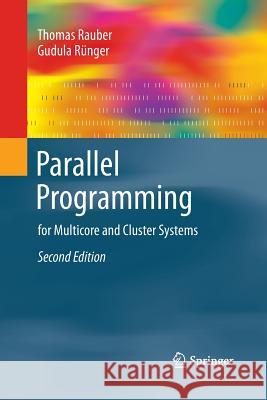Parallel Programming: For Multicore and Cluster Systems » książka
topmenu
Parallel Programming: For Multicore and Cluster Systems
ISBN-13: 9783642438066 / Angielski / Miękka / 2015 / 516 str.
Kategorie:
Kategorie BISAC:
Wydawca:
Springer
Język:
Angielski
ISBN-13:
9783642438066
Rok wydania:
2015
Wydanie:
2013
Ilość stron:
516
Waga:
0.73 kg
Wymiary:
23.39 x 15.6 x 2.72
Oprawa:
Miękka
Wolumenów:
01
Dodatkowe informacje:
Wydanie ilustrowane











